It is easy to get caught up in shopping for the fun stuff – dorm room decor, storage ideas, dorm bedding and laptops for college, but make sure to also consider dorm room safety and safety on campus as you prepare to head off to college.
We’ve broken down our recommended safety measures and tools into 4 categories:
- Personal Safety On Campus
- Dorm Room/Residence Safety
- Health And Wellness
- Safely Having A Car In College
Read on to learn our 25 must-consider ideas, and be sure you are sending your college student to school with safety in mind.

Personal Safety On A College Campus
1) Buddy System
Put simply, when walking at night or in lesser-traveled areas on campus, always walk with a buddy or a group. Avoid closed stairwells when elevators are available or take a buddy if you use the stairs. Never leave an evening club meeting, restaurant, bar or fraternity party alone.
2) Campus Security On Speed Dial
All colleges and universities want their students to be safe, and it is probably safe to say that all schools offer a phone or text line to ask for someone to escort you or drive you back to your dorm. Before you even arrive for move-in, store Campus Security’s contact information as a Favorite on your phone. Suggest your roommate and friends do the same.
Check for a campus security app as well and know where emergency phones are located around campus, usually indicated with blue lights.
3) A Little Birdie Told Me
She’s Birdie is a personal alarm that attaches to a keychain, backpack or school lanyard.
The Original Birdie is a 130 decibel keychain safety alarm with a flashing strobe light.
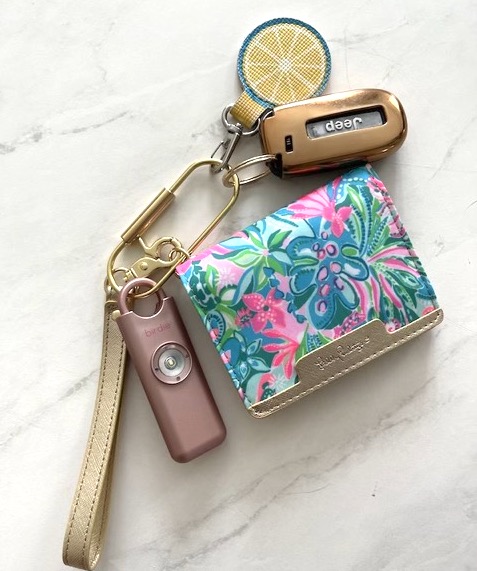
The recently released Birdie+ includes the alarm, but also offers a subscription service that includes location sharing, excuse calls (will ring your phone if you need to get out of a situation), and a live rep to stay on with you until you arrive safely at your destination or else will dispatch first responders.
The subscription service for Birdie+ is currently $4.99/month (as of February 2024).
You can use our code PSA15 to save 15% on your purchase on Birdie devices. This code is sometimes stackable with current sales or promotions.
4) Life360 or Snap Maps with friends
Location, location, location. There are many ways to share your location with trusted friends and family. In addition to the Birdie+ above, students should also consider creating a friend circle on Life360 or sharing their location (with trusted friends ONLY) on Snap Maps in Snap Chat.
5) NEVER LEAVE YOUR DRINK UNATTENDED

Let’s face it, college kids are going to go to parties, bars, tailgates and concerts. And whether they are drinking a Coke or a Rum and Coke, they need to keep an eye on their drink at all times. In a recent study, it was reported that nearly 8% of college students have had a drink spiked, with 80% of those being female.
This clever stretchy drink cover can easily go with you on a night out as it is kept wrapped up in a hair scrunchie.
6) Cell Phone Charging Block & CableS
For safety purposes, everyone should have a well-charged cell phone at all times but especially in the evenings. If possible, carry a lightweight portable charger (aka charging block, charging brick, charging bank, power bank). If you search for one online, you’ll find hundreds of options and may be inclined to go with the least expensive, but familiarize yourself with the specs below before making a selection.
Portable battery chargers are measured in mAh (milliamp hours). mAh directly relate to both price and weight. The lower the mAh, the lighter and less expensive the charger. Higher mAh charging devices are typically heavier and more expensive. But more mAh means more charging time and power.

How many mAh do you need to charge a phone?
You’ll want to have a portable charger that will fully charge your phone at least once and quickly. Most iPhone batteries are between 2500 and 4500 mAh (the Pro Max’s being at the high end), and to fully charge your phone, your portable charger needs to be at least as many mAh as your phone for one full charge.
iPads take considerably more mAh, in the 7500-10,000+ range.
So if a college student needs to be able to fully charge a phone and an iPad, the portable charger will probably need to be at least 15,000 mAh.
Recommended Charging Blocks:
Charging Blocks For College Students
| Charger | mAh | Weight | Features | Good For |
| Anker Portable Charger | 10,000 | 8oz | 2 modes - one faster for phones, one 'trickle-charge' for other devices such as headphones and watches. Travel pouch included. | Lower cost and lightweight with 10k power. You'll need to bring your own charging cables for your phone and accessories. |
| INIU Portable Charger | 10,000 | 7oz | Slimmest option & also offers USB-C out. LED display shows remaining power. No travel pouch or case. | This lightweight, fast charging model is good not only for the backpack but also small enough to keep in a clutch for non-classroom outings. |
| Portable Charger With Built-In Cables | 10,000 | 9oz | 3 output cables built-in. LED power remaining display. Travel pouch. | Those who would forget to bring charging cords or lose the cable to charge the charger. Everything is built-in. |
| INIU Portable Charger 20,000mAh | 20,000 | 12.8oz | 2 outputs and the power to charge a phone and tablet simultaneously, LED display lets you know how much charging power remains, travel pouch. | Charging iPads or other tablets. Knowing how much charging power is left helps as a reminder to charge the charger and keep it charged. |
| Anker Power Core | 26,800 | 14oz | 3 outputs (all USB ports) to charge multiple devices simultaneously, travel pouch. | Great for someone who may not remember to regularly charge this charger. It should fully charge most phones over 6 times without needing to be recharged. |
You may be tempted to select a solar charger, but these are slow to recharge and are not recommended for those with regular access to power outlets. These are better suited for outdoor enthusiasts who won’t have access to power to keep their phones charged.
If you choose a charging block without built-in cables, don’t forget to keep a short charging cable in your bag as well if your charging block does not have built-in cables. Maybe a couple of cables in case your friend next to you in Biology class needs a charge as well. Most of these charging blocks have multiple output ports. Pack of 3 1-ft long Apple (lighting) cables.
7) Online safety
- Check the privacy settings on your social media profiles and make them private if they are not already.
- Don’t post real-time on social media. Do not broadcast where you are or where you are going. Post event pics after the fact so that your location and the time you are away from your dorm/residence aren’t easily known.
- Create a Google Voice number and a ‘throw away’ email address if you must provide strangers with either. Google Voice is free, and you can just forward it to your actual phone number until you no longer need it. Same goes for an extra ‘throw away’ email address.
- Avoid apps that encourage meeting up (or worse, hooking up) with strangers.
- Never give out any personally identifiable information to unfamiliar people or sources online. No phone number, no address, no sorority name or what time your math class is.
8) Self-Defense Classes
Something to consider for everyone in the family but especially those heading off to college is enrolling in self-defense classes.
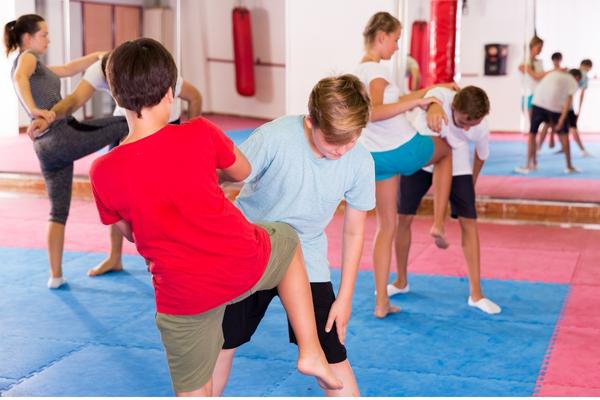
Where can you find self-defense classes? Check the following options where you may be able to find them free of charge.
- The university may offer free classes on campus – check with the campus security department.
- Your local police and fire stations.
- Your local parks and rec department.
- Look online at Udemy or YouTube for options, although in-person is recommended.
If these options don’t pan out, post in a local Facebook or Next Door group and ask for recommendations.
9) Uber/Lyft In College Towns
Ride-share services will be a likely component of most college experiences. Even if you bring a car to campus, there will be times that a ride share will be the safest or most efficient option.
Before leaving for college, students should consider installing both the Uber and Lyft apps and setting them up with a credit card so that they are ready to use should the need arise.
Personally, I put my card on my son’s apps because if they need to use Uber or Lyft, I want them to do so without the hesitation of a poor college student. We use a no questions asked policy, just take the Uber or Lyft.

To learn more about how these companies are enforcing safety during their rides, please review Uber’s Ride Safety Content and Lyft’s Safety page. In addition, Lyft has created campus partnerships with over 100 colleges to provide college-specific and discounted ride opportunities for students. See if your campus is on the Lyft partnership list.
Dorm Safety
10) Keep Your DORM Room Locked
This may seem obvious, but much of the theft on college campuses occurs when rooms are left unlocked. Theft happens quickly, and just leaving the door unlocked while you go down the hall to the bathroom or to quickly catch up with a friend is all the time it takes.
Keep your dorm room door locked at all times. And same with the windows – keep them locked, even if you’re not on the ground floor.
11) Carbon Monoxide Detector
Yes, your college should have these in all college buildings, but are they operational in a power outage? Are they regularly checked for proper functioning? Power outages can lead to leaky mechanical equipment when fans and exhaust systems don’t have power. Give yourself peace of mind and have your student plug one of these easy-to-read LED carbon monoxide detectors with battery backup in their room.
If your student is living in off-campus housing, I would definitely place a carbon monoxide detector in the main living area near the kitchen.
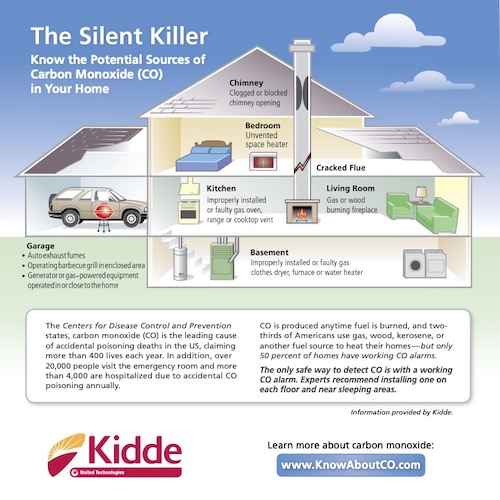
Still not sure? Take a minute to read this article about a November 2021 carbon monoxide leak in a Miami University of Ohio dorm.
12) Surge Protectors
You’ve probably considered extension cords, power strips and charging stations. The only one of these that will protect your electronic devices from an electrical surge are those with surge protection. You may think that all power strips are surge protected, but that is not the case. Many colleges ONLY allow surge protected and UL-Listed electronics in their residence halls.
Before shopping for any of these items, be sure to determine if your college or specific dorm has restrictions on what can be used. Some require certain labels, specific protection levels or auto shut-off capabilities. This pair of surge protectors is GE brand, UL-Listed, have 6 outlets each, and they have the flat plug which is important in a dorm room. You don’t want a protruding plug to unnecessarily push your bed or desk further from the wall if you don’t have to!
13) Personal Safe or Locking Cabinet
Having a place to lock up valuable items, prescription meds and even your favorite snacks is an important part of dorm safety. This has nothing to do with not trusting your roommate. But consider that your roommate may have new friends stop by that are not known entities yet, or your door could be propped open for a hall gathering, or several other potential scenarios. It just makes sense to protect your belongings.
There are a few options depending on your space and what you want to store:
- A small locking storage box sized for a few small items like pill bottles, wallet, iPad and credit cards.
- A larger locking storage box that can hold a laptop, gaming device and room for other items. with a steel cord to go around your bed or desk is a simple option.
- A Sterilite foot locker is a wheeled trunk-sized affordable storage option. Just add a padlock through the holes above the handle, and a cable lock if you want to tether it to your bed.
- A locking file cabinet for expansive storage. My son has one of these at school. He wanted room to keep his favorite snacks as apparently, snacks are not safe in a room full of guys.
14) Heat Mat For Hair Tools/Clothes Steamer
When you sign the housing contract, you’ll find a long list of ‘damages you may be charged for’, so protect the surfaces in the room appropriately. For hot hair tools or a clothes steamer (does anyone even iron anymore??), an inexpensive heat mat will do the trick.
15) Check Your Home Insurance Policy
If you have a homeowner’s insurance policy, check to see if it may cover your child’s belongings while in college.
If not, consider a dorm renter’s insurance policy which is typically very inexpensive, as little as $5-10/month. Losing your laptop or phone is painful, having to buy another one is even more painful. Keep your receipts for all valuables, take pictures of them in your dorm on move-in day, and document their serial numbers in the event you need to file a claim. Put all of this together in one digital file kept in the cloud or on a 3rd party service such as Dropbox.
HEALTH & WELLNESS
16) Get enough sleep
Everything is a little bit easier after a good night’s sleep. Studying, exercising, eating right and even staying alert to your surroundings all come more easily when you’re alert and awake and suffer when you’re exhausted. Unfortunately, college students are often not the best slept people!
Students who manage their time well and keep study loads balanced will find it easier to get to bed at a decent time and not feel obliged to all-night cram sessions.
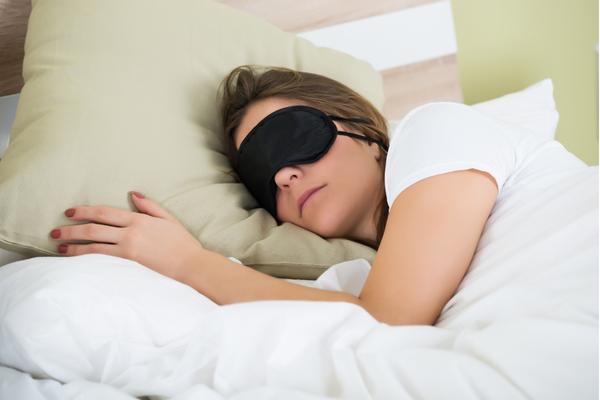
Roommates And Sleep
Another factor in restful sleep is how well you match with your roommate’s sleep habits. Be sure to take your time filling out roommate surveys and deciding who you will have for a roommate. A night owl and a morning person will just not meld well together.
You may also encounter a snoring roommate or loud late-night neighbors. If need be, simple solutions such as a loud fan, an eye mask (OEKO-TEX® certified) , ear plugs or a sound machine app may come in handy. This is the sound machine app our family has used for years when we travel. Because for some reason, parents can’t keep their small kids from running and yelling up and down hotel hallways at 6:30am!
Of course, social activities need to be factored in as well. All of this new-found freedom, new friends, new experiences all make it harder to keep to a schedule. This leads to the next tip….
17) Keep partying in check
It goes without saying, drinking and partying are often going to play a part in the college experience. But before you let loose, be sure you are surrounded by people who will look out for you as the night goes on, and that you will do the same for them.
There are too many stories about friends who ‘thought their friend was ok’ or ‘didn’t want to call the police since they might get in trouble’ often ending in tragic situations. Make a deal with your friends regarding how you will look out for one another, and stick to it. And by all means, never leave or let your friends leave a location alone.
Partying and lack of sleep aren’t good for your health, but one way to proactively head this off is to be well-hydrated. And that leads us to the next tip…

18) STAY HYDRATED
I heard it all from my son during his freshman year. On the list of reasons why he needed to buy bottled water was “the dorm is old”, “the pipes are old”, “the sinks are too short to fill a water bottle”, “it’s sooooo hot”, “I’m too tired” and the classic “I’d rather spend my time studying than filling up water bottles”. Riiiiight…
But bottled water has so many drawbacks. Beyond not being environmentally friendly, it costs money, and cases of water are quite heavy to get from a store to a college dorm room on a regular basis.
Reusable Water Bottles
If your college has convenient water filling stations, then invest a few easy to clean water bottles and perhaps a basic pitcher (look for under 10″ and thin profile for mini fridge) to keep in your room, and you are good to go. Make time to fill a large water bottle on your way to your first class and sip on it through the day. Aim for at least 80oz of water per day.
For a simple and easy to clean water bottle, Nalgene is a great option. They are one of the very few that are made in the USA, and they are also BPA, BPS and Phthalate free. A wide mouth lid is the easiest style to clean.
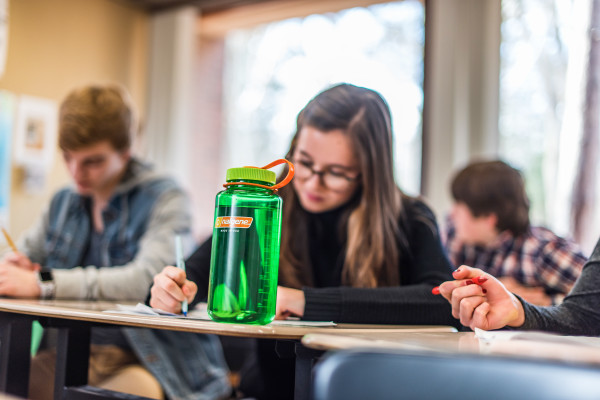
For more trendy and insulated options, Owala water bottles, Stanley quenchers and Hydro Flask are popular options.
Water Filter Pitchers
If your dorm room isn’t convenient to a water filling station, consider a Brita pitcher to keep in the room. Water pitchers are best kept refrigerated in order to prevent organisms from growing, so if you will not have a refrigerator in your room or suite that can accommodate a pitcher, you should consider other options.
Brita is the most popular choice for college students. These are a few of their offerings that are more compact to fit in a small refrigerator with the last one being appropriate for a full-sized refrigerator should there be a suite situation with roommates who want to share.
The 6-cup Brita pitcher should fit in most mini fridges, or check the measurements for your fridge to see if a 10-cup pitcher will work.
Note that Brita offers 2 types of filters – a standard filter which lasts about 40 gallons, or 2 months. And a longlast filter which lasts about 3 times as long.
19) First Aid Kit & MEDICAL SUPPLIES
It might be a little hard to think about being far away if our kids are sick or hurt, but take some time to think through some first aid/medicinal items to send with them to college so you can ‘help’ from afar.
As far as OTC medicines, a nurse in our Dorm Shopping & Deal Alerts Facebook group, put together a printable list of other the counter solutions to common illnesses and injuries. Please note that this is not medical advice but rather a user-contributed document that you might find helpful. You can find it here in our group – you’ll need to join the group first to access it: https://www.facebook.com/…/dorm…/posts/1331469777763245/.
Please note that this is not medical advice but rather of list of things that your student may want to consider for college.
First Aid Supplies To Consider
Beyond OTC medications and treatments, you may want to consider:
- Band-Aids
- Instant Ice Pack (no freezer)
- Hot/Cold Packs
- Alcohol Wipes
- Digital thermometer
- Athlete’s Foot Spray

- Sunscreen and possibly bug spray. Not really first aid, but preventative measures!
- Multi-vitamins
- Mouthwash
- Chapstick/lip balm with sunblock
- Eye drops
- Ear plugs
- Q-tips and cotton balls
- Tweezers
- Small scissors
- And even a box of condoms – boy did that embarrass my son 🙂
- Many are also sending Narcan in nasal spray form with their students – ask your Pharmacist about the free Narcan program
Target should offer a one-time 20% off entire purchase college student coupon over the summer. All of these items would be a good use for that coupon along with other dorm-related needs, and we recommend shopping online for a better selection for dorm rooms. You can get started with Target’s student verification now and should see the coupon in June or July. I recommend opening an account for the student especially if you have multiple college-bound students. With separate accounts, they would each receive one of these one-time use coupons.
Members in our Dorm Shopping group often ask for recommendations for how to store all of these small items. These are some of the favorite options:
- Hanging Toiletry Bag
- Simple Over Door Shoe Holder or a more substantial over-door organizer
- Popular Stack & Carry Bins – make sure to get this larger size, not the smaller one
- 2 Layer Art Bin
- Empty Tool Box – need another Stanley?
- Empty Tackle Box – can add padlock
- Soft-Sided First Aid Bag
20) CLEAN AIR
Germs, allergens, pollutants, mildew and even smells are more likely to congregate in a small dorm room than in typical family homes. Limited ventilation, less frequent and thorough dusting and vacuuming, and so many people in small spaces exacerbate poor air quality.
Unless you have windows that can and will be regularly opened, the only way to reduce exposure to what is gathering in the air is to equip your dorm room with an air purifier. Honestly, I thought it might be a little over the top until I walked into my son’s dorm last year on move-in day. The building was built in 1965, and it smelled like it. An all-male dorm, mostly athletes – I was convinced that something needed to clean the air.
What To Look For In An Air Purifier
When shopping for an air purifier, look for true-HEPA filtration, no U/V filtration (it creates unhealthy ozone), noise level if that is of concern, ability to turn off any display lights, and look for Energy Star rated if this is required by your dorm.
As most dorm rooms are in the 150-250sqft range, you should not need an ‘extra large room’ model.
Unless you know you can hook up an Alexa or Google Home in your room (this is typically difficult over school wifi networks), don’t pay extra for WiFi capable air purifiers.
I checked Consumer Reports, and while I can’t share the exact results due to that content being behind the paid membership wall, I can tell you that the most highly rated affordable brands are Blue Air, Honeywell, Bissell and Levoit.
Here are our recommendations based on ratings and features in these 2 price ranges.
Under $100 Air Purifiers
Levoit LV-H132 – 12.6″ tall by 7.9″ diameter. Nightlight (with on/off). Not Energy Star Certified.
Levoit Core 300 – 16.25″ tall by 8.7″diameter. Sleep mode. Energy Star Certified.
BlueAir Blue 511 – 13.9″ tall by 7.9″ diameter. Auto-sensor adjusts fan. Energy Star Certified.
$100-200 Air Purifiers
PuroAir HEPA 14 – 14.5″ tall, 8.5″ diameter. A medical grade air purifier able to filter particles to 99.99%.
BlueAir 411a Max – 18.9″ tall, 10.6″ diameter. My son has this one for his dorm built in 1934 that is notorious for air and mold concerns.
Bissell Air220 – 25″ tall, 14.75″ wide and 8.3″ deep. Bigger footprint, looks a bit like a retro home speaker. Will cycle air in a dorm room about 5 times an hour (a lot!). Auto-sensor adjusts fan. Indicator shows level of pollutants. Does not specifically say Energy Star Certified.
21) Healthcare Power Of Attorney
Your baby is heading to college, but your baby is also probably a legal adult by now. Legal adulthood comes at age 18 in most states, 19 in Nebraska and Alabama and 21 in Mississippi.
But while your 18-year-old may still be in high school and living under your roof, you no longer have a right to information, let alone to make critical decisions in a potential emergency medical situation. This is the case even if they are still on your health insurance, you’re paying their college tuition, and you’re the emergency contact on their school forms.
If the young adult has the ability to give permission for you to be involved, then it is no problem. But if they are unconscious or unable to give permission, you legally cannot be provided with any information or decision-making without a healthcare power of attorney in place.
Be Their Voice When They Can’t Be
We have a full article just on this important issue of the legal documents you need when your child turns 18. If you already had this on your radar and are ready to go, the solution that so many college students use is Mama Bear Legal Forms. You can use our code PSA20 to save 20% off the Young Adult legal package.
For around $60, their online service walks you through all of the questions (some pretty serious questions and big decisions, you’ll want to sit with your child as they complete the forms), and you can create the forms for a second state free of charge. So if your child is attending college out of state, you can have a set for your home state and a set for your college state. Then you can install Mama Bear’s free app on your phone and your child’s phone, and keep a copy of the documents there.

If You Bring A Car To Campus
22) Tire inflator
This helpful gadget is a combination digital tire pressure reader AND air compressor to fill your tires. No more trips to the gas station after getting a low tire alert from your car or to be sure your tires are ready for a road trip.
Powered by the 12V outlet (cigarette lighter), this 9.5″x6″ tire inflator comes with a 12 foot power cord and an LED for use at night. Just set the desired tire pressure level, and this compressor will fill it to that level and auto shut off.
Additional sized nozzles come with the compressor that can be used to inflate bike tires, pool floats and sports balls.
Money Saving Tip: Properly inflated tires can improve gas mileage up to 3%. With gas prices on the rise, any little bit helps.
23) Portable jump start battery
After carrying this around in my car for the past year or so, I actually had to use it last week for the first time. Parked in a shopping center parking lot around dusk, I came out to find my big SUV would not start.
My husband bought one of these for each of our cars, including our kids’. I knew it was there, but I had never taken it out of my glove compartment nor had any clue how to use it. I had admittedly never jump-started a car before in my life.
This portable jump start battery is essentially a heavy-duty charging block that will absolutely charge phones and iPads, but it also comes with jumper cables and will jump-start a car. And apparently, even a big ol’ 8 cylinder, 8 passenger SUV!
My husband was out of town, my teenagers were each at their summer jobs. I thought about calling one of my neighbors, but hey, let’s see what this thing does. Got it out, and read the instructions. Probably read them 3 times honestly, but then I followed them closely, and sure enough, it started my SUV. After the charger had sat untouched in my car for 6 months or a year.
In addition to its charging and jump-start abilities, the portable jump start battery can also be an ultra-bright flashlight, a strobe light or a hazard light for other emergency roadside situations. It can be recharged using the car’s 12V outlet (cigarette lighter), or at home using a regular AC outlet.
24) Extra phone chargING CABLES
Be sure you and your passengers can always charge your phones in the car.
Need more ports for everyone to use? This Car Charger has 2 ports for the front seat and an adapter with 2 more ports for the backseat.
Don’t forget the cables to plug into the car charger. This pack of 6 lightning cables is under $10 and has two 3′, two 6′ and two 10′ USB iPhone cables. Leave these in the car for regular or emergency use.
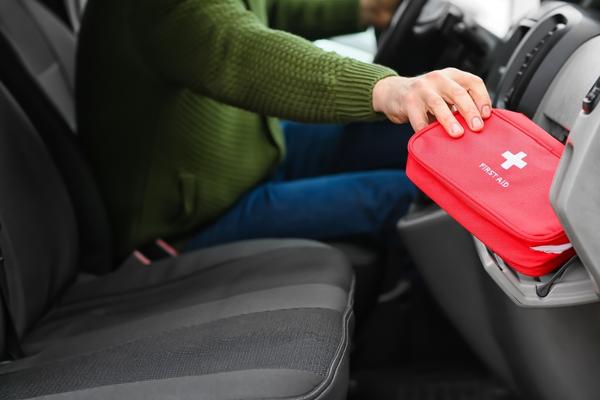
25) Glove Box First Aid Kit
You can put together a first aid kit yourself from various items you have at home and use this small bag to store it in the glove compartment.
Or you can order a premade first aid kit made to fit in a glove compartment. There are a lot of things in this one that I wouldn’t think to include, and for the price, it all seems quite worth it.
EDUCATION AND PREPARATION ARE KEY
Hopefully this article has provided information and education to help college students prepare for a safe and fun college experience.
If you have additional ideas on improving dorm safety or safety in general for college students, please share them in the comments!
Get The Info On All The College Dorm Room Essentials
- You can see our full list of dorm recommendations in our Complete Dorm Room Essentials Guide.
- Our Dorm Shopping Recommendations and Deal Alerts Facebook group will let you know when these dorm essentials go on sale and also provide a community of like-minded dorm shoppers with great questions and answers!
- Want to know when new content goes live here on Positively Squared Away? Simply subscribe to our email newsletter below – we promise not to send them more frequently than once per week.
Links to our other Dorm Planning articles are below:
How To Layer A Perfectly Comfortable Dorm Bed
How To Prepare And Pack For College Move In Day
Sentimental Gift Ideas Perfect For College Move In Day
Thank you for reading, and I hope you’ll share this article and our Facebook group with your dorm-bound friends! You can copy this link into text, email, your social media page, or a Facebook group. Thank you!
This article: https://positivelysquaredaway.com/tips-for-dorm-room-and-college-campus-safety



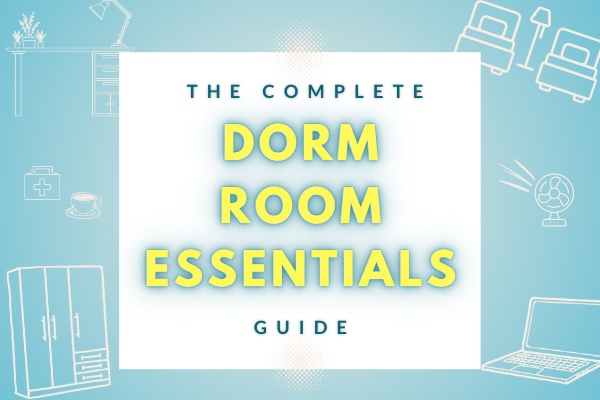









This is such a comprehensive list! Our oldest just finished his first year of college and there are a few things here that we missed when we were helping him pack. Thanks for the safety tips 🙂 Nipa